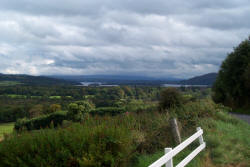 |
Lough Gill taken from the Holy
Well road, just beyond
the Sligo race course.
Click on
image at left for full photo
|
 |
A photo I took of Lough Gill -
on the right in the distance
is Beezie's Island, the only island on the lake that was ever
inhabited.
Click on
image at left for full photo
|
|
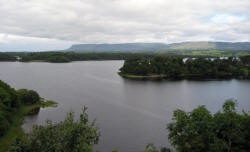 |
A view of Lough
Gill taken from Dooney Rock, a
rock outcrop located in the Slish Woods, and subject of the
famous "Fiddler of Dooney" poem by Yeats.
Click on
image at left for full photo |
|
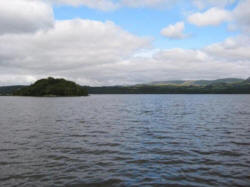 |
The "Lake Isle of Innisfree"
made famous by
William Butler Yeats in his 1892 poem. It is actually a very
small, unassuming outcrop a short way from the eastern shore of the lake.
Click on image at left for full
photo |
|
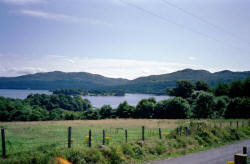 |
Beezie's (Gallagher)
Island as seen from the road to the Holy
Well at the back side of Cairns Hill. The island has a derelict
house were the famous local once lived.
Click on image at left for full
photo |
|
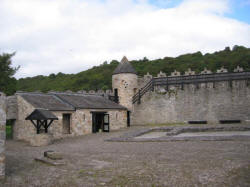 |
Located on the shores of Lough
Gill on the Sligo-Dromahair road is Parkes Castle which
built by one of the 'Planters' early in the 17th century.
The castle is rectangular in shape, and has three levels
with mullioned windows and diamond-shaped chimneys. It forms
part of one side of a five-sided bawn with large rounded
turrets at two corners.
Click on image at left for full
photo |
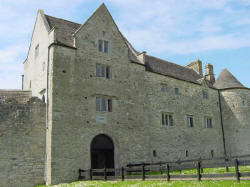 |
The entrance to Parkes Castle is
through a passage-way in the ground floor of the house. The
castle has undergone extensive restoration, both within the
castle and the buildings lead on to the courtyard, which
include a smithy and a tea room.
Click on image at left for full
photo |
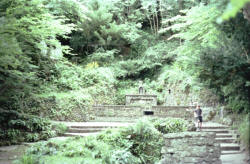 |
Sligo's Holy Well (Tobernalt) is
located a short distance from the shores of Lough Gill and
is a beautiful spot. During the eighteenth and part of the
nineteenth centuries, Catholic Masses were banned by the
British in Ireland, forcing locals to celebrate Mass in
hidden areas like this.
Click on image at left for full
photo |
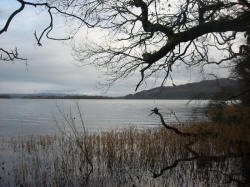 |
Another view of Lough Gill,
showing its more "mysterious" side. .
Click on image at left for full
photo |
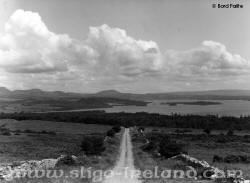 |
This Bord Failte photo is of
the Green Road which crosses the top of Cairns Hill. The road is now paved with
many houses located on the left as you look towards the lake.
Click on image at left for full
photo |
